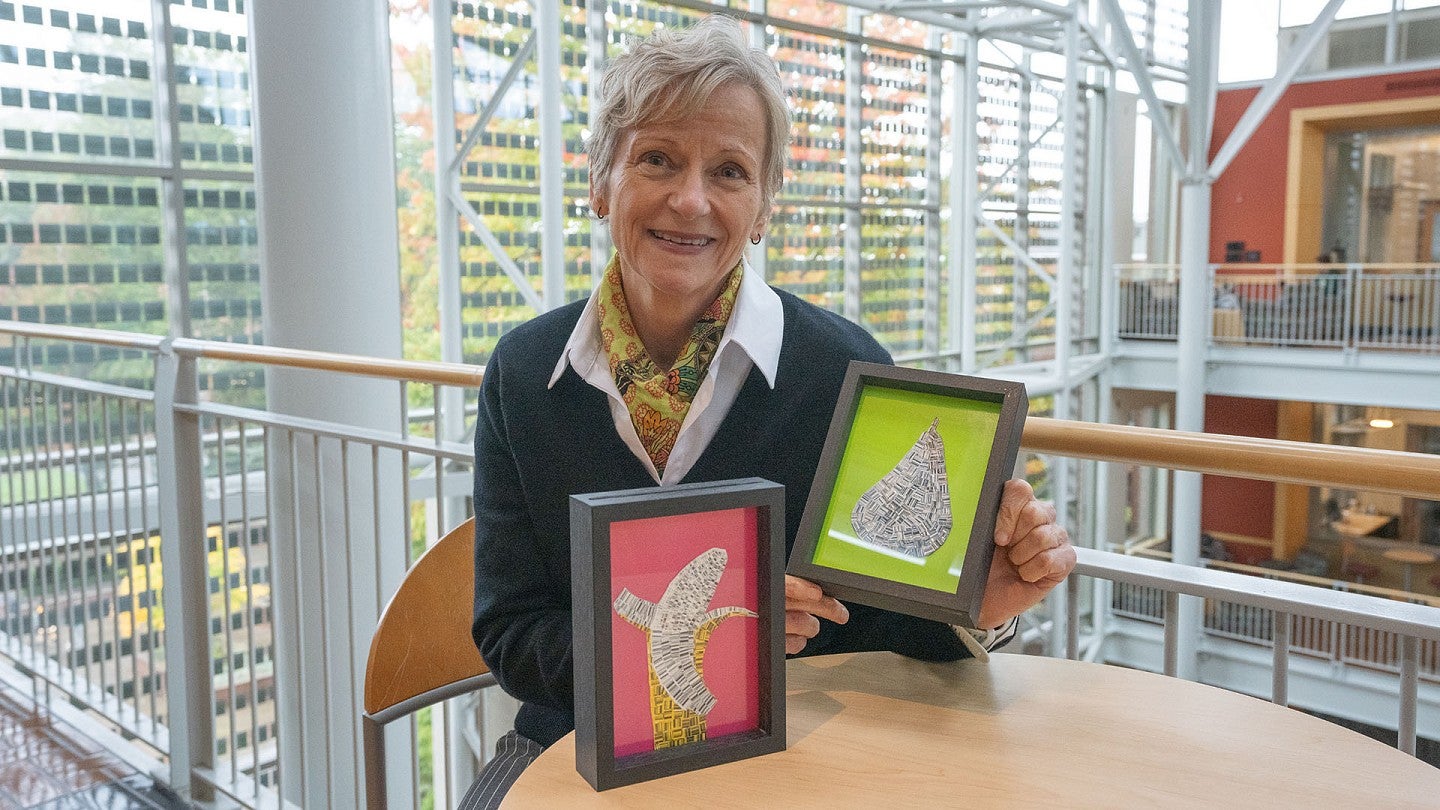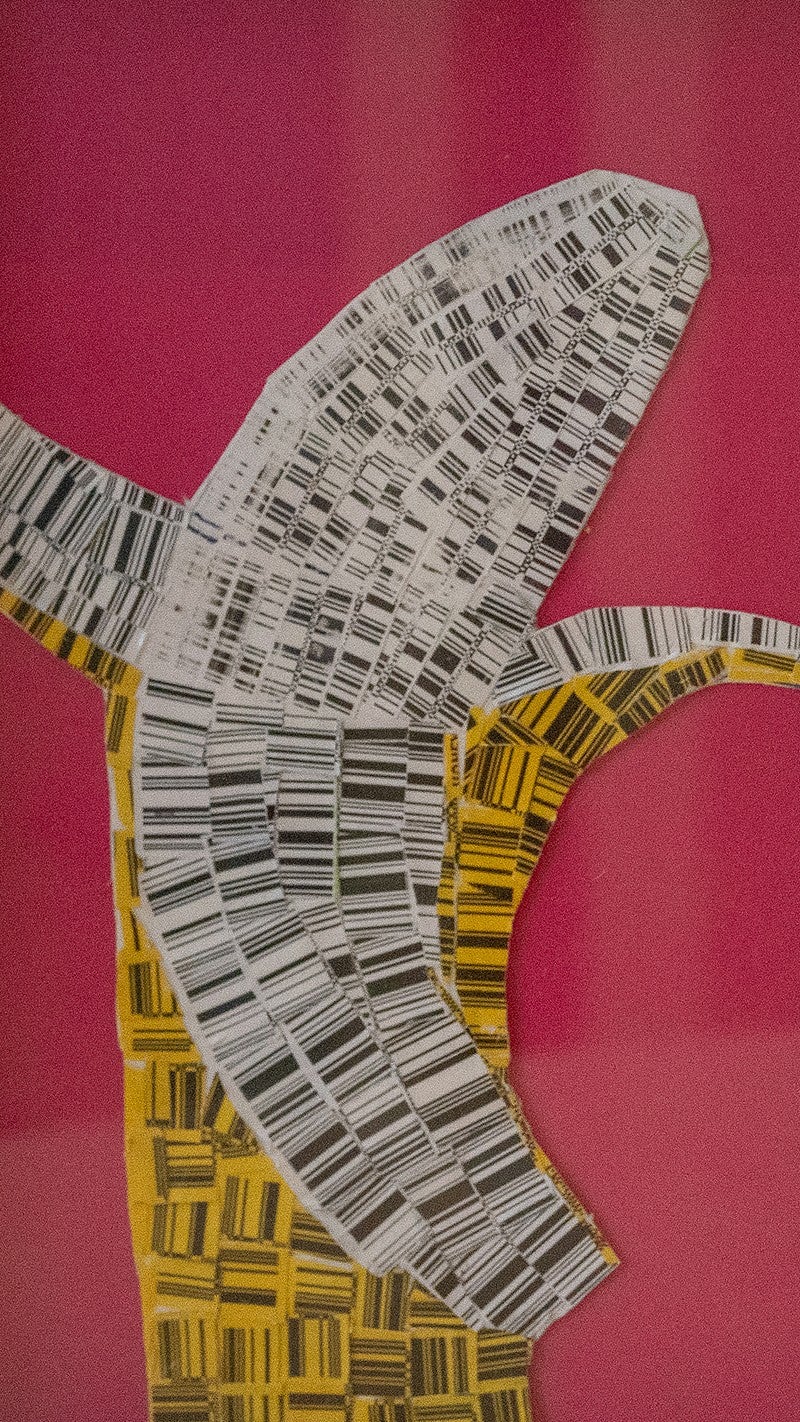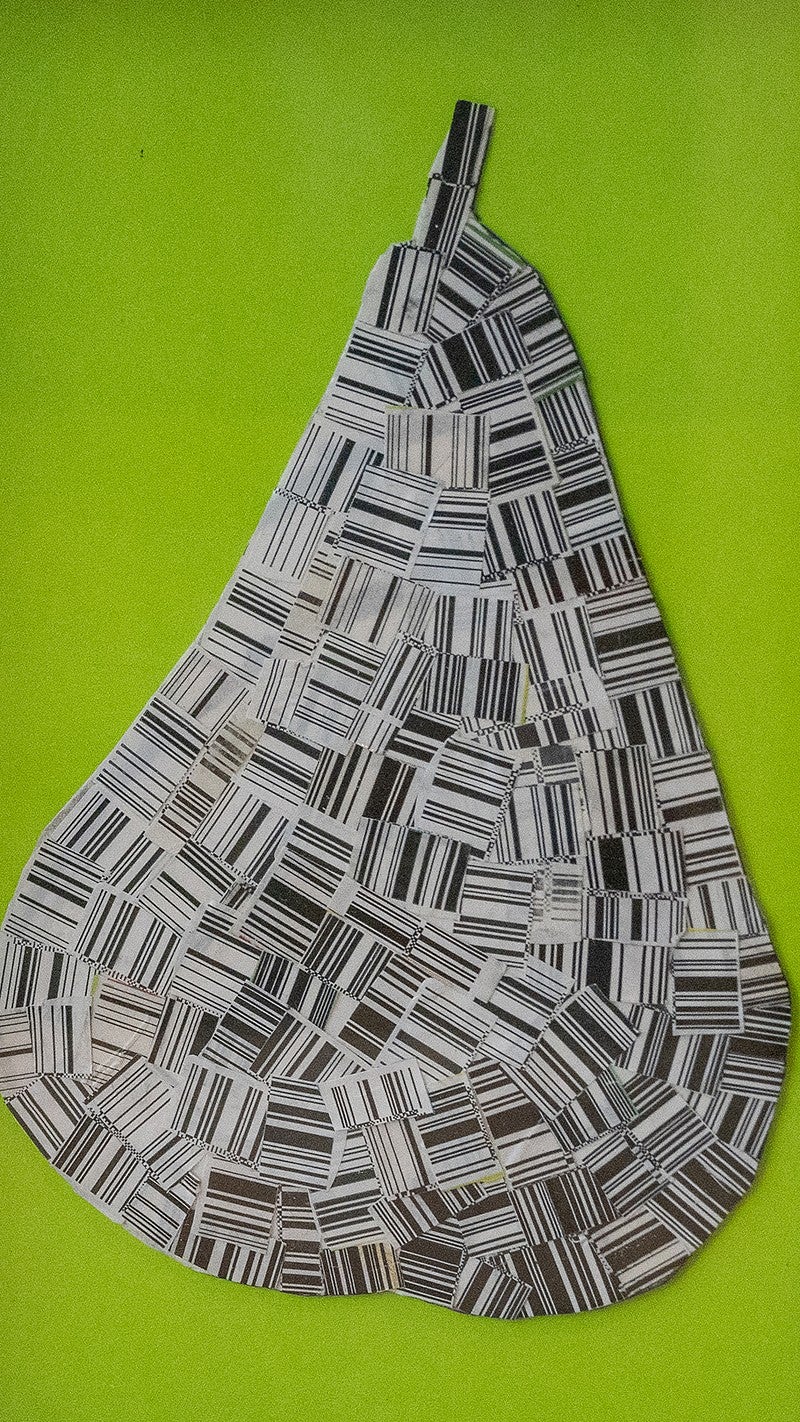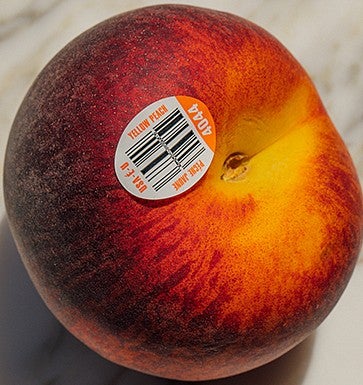
Still life with fruit stickers
A UO business professor creates eye-catching art with an environmental message
Art created by a University of Oregon marketing professor and recently shown in Paris uses an unusual media: those little barcode stickers on produce.
Many consumers assume the stickers are paper, but they’re actually plastic. And when left on the skin of fruits and vegetables, they can contaminate compost and the soil of farms and gardens.
“It’s a source of plastic in our environment that doesn’t need to be,” said the artist, T. Bettina Cornwell. She is Philip H. Knight Chair and head of the marketing department at the UO’s Lundquist College of Business.
“Growers from different countries use the stickers, but they’re not required,” she said. “In fact, France has banned them. As a major produce exporter, the U.S. could be a leader by adopting biodegradable, recyclable types of stickers.”


Cornwell’s depictions of a banana and a pear, using a mosaic-crosshatch style, were displayed at the art festival within the Association for Consumer Research Conference, which attracted 1,400 attendees from around the world.

“It’s cliche,” Cornwell said, “but a picture is worth a thousand words, and sometimes you can draw attention for policy change and change in consumer behavior through something that is more eye-catching than traditional forms of scholarship.”
The project was a departure from Cornwell’s usual research work in advertising and sports marketing. But it appealed to her arts background. She double majored in fine arts and marketing as an undergraduate.
As part of an ongoing research project on plastics, Cornwell began thinking about plastics that are hard to avoid, like envelope windows and the price look-up labels on produce. When she saw the conference’s call for art submissions, she began experimenting with designs using the labels.
She recruited her husband and two adult sons to help her collect the stickers over a six-month period. Then she spent the next two months creating the pieces, painstakingly trimming each sticker with a hobby knife.

Cornwell said she enjoyed the back-and-forth with conference-goers who were curious about her art.
People would ask, “Did you make that? What’s it about?”
“These are price look-up stickers on produce and they’re made of plastic,” she explained.
“They are? I’ve eaten those!”
“When people learned the story behind the art, they were very surprised by their own behavior and their own assumptions about produce stickers,” Cornwell said.

